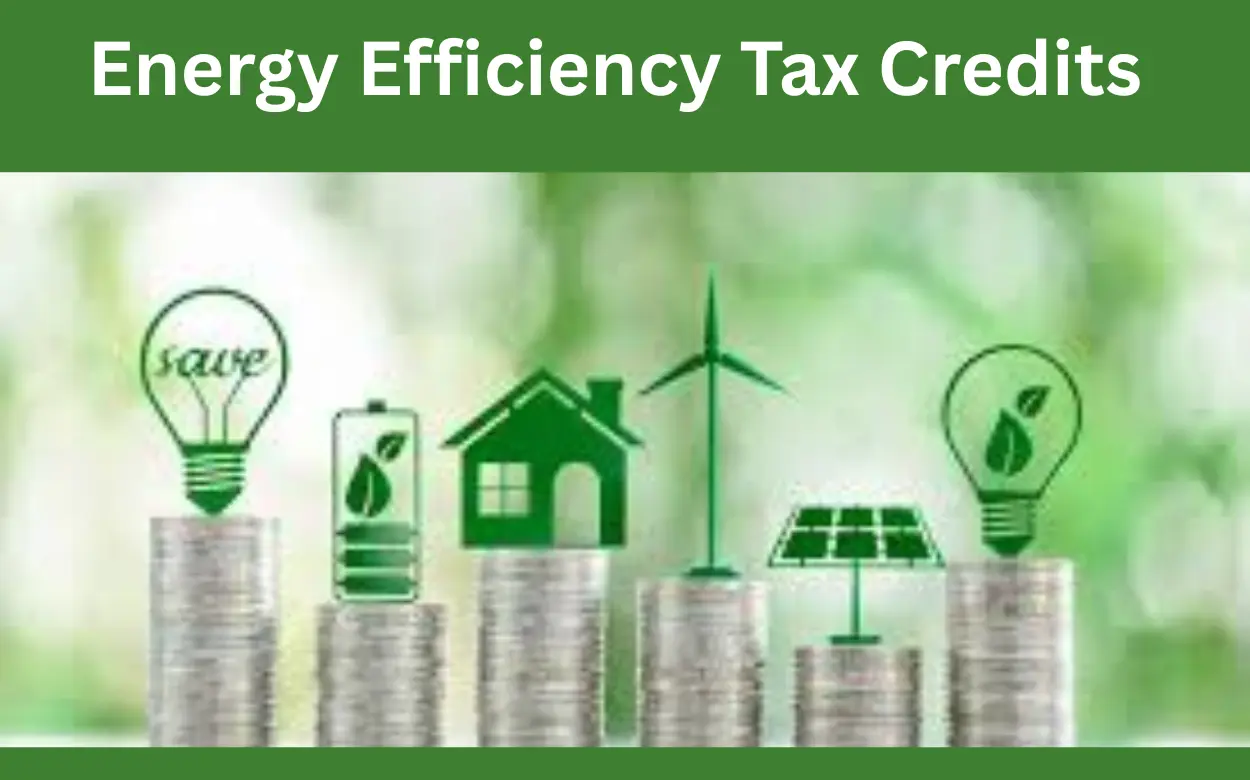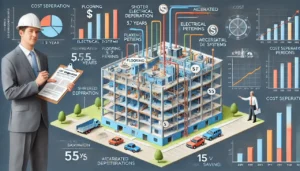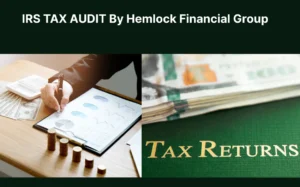Navigating the world of energy tax credits can seem daunting for small business owners, but understanding these opportunities can significantly impact your bottom line. As the push for sustainability grows, governments are offering incentives to encourage businesses to adopt more energy-efficient practices. Energy tax credits can cover a range of improvements, from energy-efficient windows to vehicles and appliances, providing substantial savings. This post will guide you through the various energy efficiency tax credit and how they can benefit your business. With the right information, you can make informed decisions that lead to financial savings while promoting a greener future.
Understanding Energy Efficient Tax Credit
Energy tax credits offer small businesses a way to save money while promoting sustainability. Let’s explore the basics, eligibility criteria, and benefits of these credits.
Basics of Energy Tax Credits
Energy tax credits are financial incentives provided by the government to encourage businesses to adopt energy-efficient practices. These credits directly reduce the amount of tax owed, making them more valuable than deductions.
The credits typically cover a percentage of the cost of qualifying energy-efficient improvements. For example, a business might receive a credit for 30% of the cost of installing solar panels.
Small businesses can claim these credits on their annual tax returns. It’s important to keep detailed records of purchases and installations to support the claim.
Eligibility for Tax Credits
Eligibility for energy tax credits depends on several factors. The type of business, the specific energy-efficient improvements made, and the tax year all play a role in determining eligibility.
Most small businesses qualify if they’ve made eligible energy-efficient improvements to their facilities. This can include upgrades to lighting, HVAC systems, or building insulation.
To claim the credit, businesses must use IRS Form 3468 for the Investment Credit. It’s crucial to consult with a tax professional to ensure all eligibility requirements are met.
Benefits for Small Businesses
Energy tax credits offer numerous benefits for small businesses. The most obvious is the reduction in tax liability, which can significantly improve cash flow.
These credits also encourage businesses to invest in energy-efficient technologies. This leads to long-term energy savings, reducing operational costs over time.
By adopting energy-efficient practices, businesses can also enhance their reputation as environmentally responsible organizations. This can attract environmentally conscious customers and potentially open up new market opportunities.
Types of Energy Efficiency Tax Credits
Small businesses can take advantage of various energy tax credits. Let’s examine some of the most common types available.
Tax Credit for Energy Efficient Windows
The tax credit for energy efficient windows is a popular option for small businesses looking to improve their building’s energy efficiency. This credit can cover a significant portion of the cost of new, energy-efficient windows.
To qualify, windows must meet specific energy performance criteria set by the Environmental Protection Agency (EPA). These criteria typically include factors like U-factor and Solar Heat Gain Coefficient.
The credit amount varies depending on the tax year and specific legislation. For example, in recent years, businesses could claim up to 10% of the cost of qualifying windows, with a maximum credit of $200 for windows.
Energy-Efficient Vehicles Tax Credit
The energy-efficient vehicles tax credit incentivizes businesses to adopt cleaner transportation options. This credit applies to various types of vehicles, including electric, plug-in hybrid, and fuel cell vehicles.
The credit amount varies based on the vehicle’s battery capacity and gross vehicle weight rating. For instance, all-electric vehicles often qualify for the maximum credit amount.
To claim this credit, businesses must purchase new vehicles for business use. The vehicle must be placed in service during the tax year for which the credit is claimed.
Energy Efficient Home Improvement Tax Credit
While primarily designed for homeowners, this credit can benefit small businesses operating from home offices or rental properties. It covers various energy-efficient improvements to residential buildings.
Eligible improvements include insulation, energy-efficient roofs, water heaters, and HVAC systems. Each type of improvement has specific efficiency requirements to qualify for the credit.
The credit amount is typically a percentage of the cost of the improvements, up to a maximum limit. It’s important to note that labor costs are often included in the credit calculation.
Utilizing Energy Efficiency Tax Credit
Maximizing the benefits of energy efficiency tax credits requires careful planning and execution. Let’s explore how to apply for these credits, maximize benefits, and avoid common pitfalls.
Applying for Energy Efficient Tax Credits
Applying for energy efficient tax credits involves several steps. First, businesses need to identify which credits they’re eligible for based on their energy-efficient improvements.
Next, gather all necessary documentation, including receipts, manufacturer certifications, and any required energy audit reports. These documents will support your claim when filing taxes.
Finally, complete the appropriate IRS forms. For most energy tax credits, you’ll need to file Form 3468 along with your business tax return. Always consult with a tax professional to ensure accurate filing.
Maximizing Energy Efficiency Tax Benefits in 2025
To maximize energy efficient tax credits in 2025, start planning early. Research upcoming changes to credit amounts and eligibility criteria to make informed decisions about energy-efficient upgrades.
Consider bundling multiple energy-efficient improvements to maximize your total credit amount. For example, combining window replacements with HVAC upgrades could lead to substantial tax savings.
Remember that some credits have caps or limits. Strategically timing your improvements over multiple tax years could help you maximize your overall benefit if you’re planning extensive upgrades.
Common Mistakes to Avoid
One common mistake is assuming all energy-efficient products qualify for tax credits. Always check the specific requirements for each credit before making purchases.
Another error is failing to keep proper documentation. Without detailed records and manufacturer certifications, you may be unable to claim the credit even if you made eligible improvements.
Lastly, don’t overlook the importance of professional advice. Tax laws are complex and change frequently. Consulting with a tax professional can help you avoid costly mistakes and maximize your benefits.
Future of Energy Efficiency Tax Credits
The landscape of energy tax credits is continually evolving. Understanding upcoming changes can help businesses plan for the future and make informed decisions about energy-efficient investments.
Energy Efficiency Tax Credit 2025
The energy efficient tax credit landscape for 2025 is shaping up to offer expanded opportunities for small businesses. New legislation may introduce higher credit amounts and broader eligibility criteria.
One potential change is an increase in the credit percentage for certain energy-efficient improvements. This could make larger projects more financially feasible for small businesses.
Keep an eye on announcements from the IRS and Department of Energy for the most up-to-date information on 2025 energy tax credits. Early awareness of these changes can help in strategic planning.
Changes in Energy Efficient Windows Tax Credit
The energy efficient windows tax credit is expected to see some modifications in 2024. These changes may affect both the credit amount and the efficiency standards required to qualify.
There’s potential for an increase in the maximum credit amount for window replacements. This could make larger-scale window upgrades more attractive for small businesses.
New efficiency standards may also be introduced. Businesses should work closely with window manufacturers to ensure any new installations will meet these updated requirements.
Impact of Policy Changes on Small Businesses
Policy changes in energy tax credits can significantly impact small businesses. Increased credit amounts could make previously cost-prohibitive upgrades more accessible.
Changes in eligibility criteria might open up new opportunities for businesses in different sectors. For example, expanded credits for electric vehicle charging stations could benefit retail businesses.
However, stricter efficiency standards could also increase the initial cost of some improvements. Businesses will need to carefully weigh the long-term benefits against any short-term cost increases.
Getting Professional Guidance
Navigating the complexities of energy efficiency tax credits can be challenging. Professional guidance can help ensure you’re maximizing your benefits while staying compliant with tax laws.
Importance of Financial Consultation
Financial consultation is crucial when dealing with energy tax credits. A knowledgeable advisor can help you understand which credits apply to your business and how to maximize your benefits.
Consultants can also assist in long-term planning. They can help you strategize your energy-efficient improvements to optimize tax benefits over multiple years.
Moreover, professional guidance can ensure you’re staying compliant with all tax laws and regulations, helping you avoid potential audits or penalties.
Steps to Book a Consultation with Hemlock
Booking a consultation with Hemlock Financial is a straightforward process. Visit our consultation page to get started.
Select a convenient date and time for your consultation. You’ll be asked to provide some basic information about your business and your specific concerns regarding energy tax credits.
After booking, our team will reach out to confirm your appointment and provide any additional information you might need to prepare for the consultation.
Long-Term Strategy for Energy Savings
Developing a long-term strategy for energy savings involves more than just claiming tax credits. It’s about creating a comprehensive plan for energy efficiency that aligns with your business goals.
Start by conducting an energy audit of your business. This will help identify areas where you can make the most impactful energy-efficient improvements.
Consider phasing your improvements over time. This approach can help manage costs and take advantage of tax credits across multiple years.
Remember, energy efficiency tax credit is an ongoing process. Regular reviews and updates to your strategy can ensure you’re always maximizing your energy savings and tax benefits.




